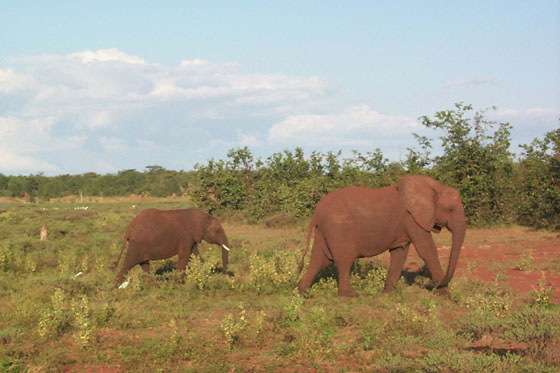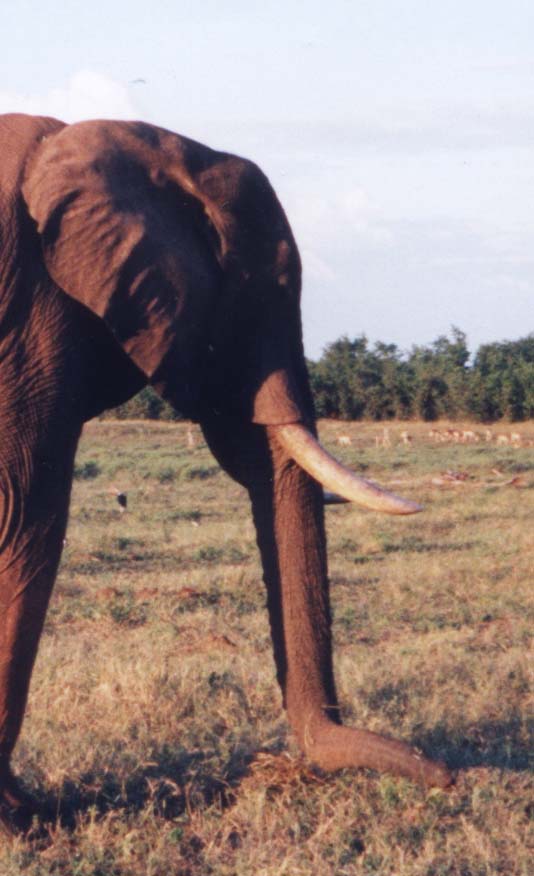
|
||||||
| Methodology |
How much is an elephant worth? |
|
Elephants are the largest living land mammals in the world. Some range in height from 10 to 15 feet. Their trunk is boneless but muscular and is actually an elongated upper lip and nose. It is used to gather grass, leaves and water to the mouth. Elephants consume up to 500 pounds of food each day depending on their age. They also consume as much as 50 gallons of water each day by drawing it through their nostrils and squirting it into their mouth. The trunk is also used to rip leaves and foliage off trees, and draw up dust for bathing. The most sensitive organ on the elephant, the trunk is constantly picking up scents of food and/or danger from the ground and air. Floppy Trunk Syndrome is a mysterious and deadly disease that renders the trunk useless and is always fatal.

Indigenous people, for example the Maasai, live in relative balance with the environment and have a traditional knowledge of the toxic effects of local plants and vegetation. Therefore, the Floppy Trunk Expeditions plan to utilize this native intelligence, combined with the latest technology of GPS tracking devices, to identify the root cause of Floppy Trunk Syndrome.

Choke, a bull elephant, shows obvious deterioration of the muscles in the lower part of the trunk. The slow process of starvation is beginning as his head gets thinner. The bottom part of Choke's trunk lays on the ground, useless. (photo: Ilana Pearlman, April, 1999)